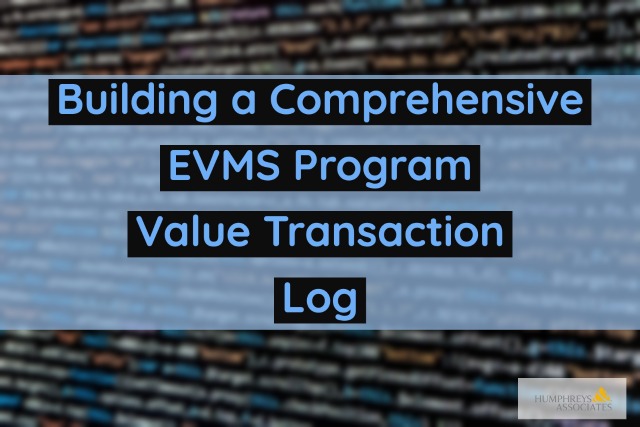
EVM Program Managers are subject to change requests and direction in the internal scope, schedule, and budget baselines from a number of sources. Integrated Baseline Reviews (IBRs), Program Reviews with customers, Earned Value Surveillance Reviews (EVSRs), and Control Account Manager (CAM) requests via Baseline Change Requests (BCRs) are some of the ways that can result in changes to the baseline. The Earned Value Management System (EVMS) Guidelines require detailed, accurate, and current reporting of contract budgets, earned value, and actual costs, including incorporation of baseline changes.A Program Value Transaction Log is one way to ensure reports containing budget information that are submitted to both internal and external customers are always reconcilable to contract documentation. It is more than the standard EVMS Contract Budget Base (CBB) Log or a Performance Measurement Baseline (PMB) Log, because while this log incorporates both of those logs, it can also contain more information on two levels; the contract price and the internal distribution of budget.
The Earned Value budget traceability starts with the Negotiated Contract Price, and then reduces for any appropriate fees to derive the Contract Target Cost (CTC). The cost value of any Authorized Unpriced Work (AUW), or the contractor proposed cost of customer authorized scope that has not yet been negotiated, is added to equal the Contract Budget Base (CBB). When the value of the Management Reserve (MR) budget is identified by the Program Manager, that amount is subtracted from the CBB to yield the Performance Measurement Baseline (PMB); Undistributed Budget (UB) is then subtracted from the PMB, with the remainder being budget that will be distributed to Control Accounts (CA) and Summary Level Planning Packages (SLPPs). The graphic below illustrates this process.
An example from a sample excerpt of a Program Value Transaction Log (PVTL) is shown below (first as an EVMS PVTL Excel spreadsheet and then also as an EVMS PVTL screen-shot). It stops at the “Distributed Budget Total $” column, but the shaded columns show that the actual distribution of budget can be very detailed, even down to the overhead costs and the elements of cost, if EVMS program management so desires.
Or, it can be the abbreviated version shown below, or even abbreviated further by beginning with the “Contract Target Cost column”, and going through Column 7, “Total Distributed”.
The utility of the Program Value Transaction Log (PVTL, or any other name) is that one can keep track of contract changes and internal changes. By going to the monthly summaries at the end of each accounting month, the amounts that should be reported in the Integrated Program Management and Data Analysis Report (IPMDAR) database are traceable.